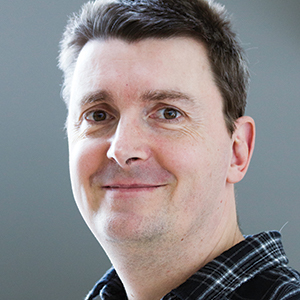Tips and tricks for writing great conference abstracts
Attending a conference has many perks: You can catch up with the newest research, make new friends, connect with potential employers and, perhaps most importantly, showcase your own work with a talk or poster. To that end, you usually have to submit a short abstract making a case for why you should be given the opportunity to present.
Given that you have only about 100 to 300 words to ingratiate yourself with busy readers, you have a fine needle to thread. Here are some ideas for how best to do that.
Get (it) organized
A well-organized abstract is to readers what a well-drawn map is to navigators. It will help them get to where you want them to be — in your session or at your poster. Rather than following by rote the typical organization of introduction, methods, results and discussion, think of these sections as elements of storytelling:
Opening: Introduce the topic and your motivation for this work (usually in two to three sentences).
Challenge: State the research challenge/hypothesis (one to two sentences).
Action: Describe methods and report results (four to six sentences).
Resolution: Summarize key insights and their place in the broader picture (one to two sentences).
This idea, based on a proposal by Joshua Schimel (1), follows the classic story arc, playing to readers’ expectations. Some authors think their audience may want to follow their personal path to discovery, which likely had many false leads and dead ends. Few readers appreciate such an approach. You also don’t want to just “throw it all out there.” Instead, lay out your text logically (not necessarily chronologically) and succinctly — which brings us to the next point.
Keep it short and simple
Use short words and simple language to tell a simple story (see figure). If this strikes you as odd — after all, science usually requires sophisticated language — consider how often you have read a confusing piece of research. You probably found that keeping track of arcane acronyms, indecipherable jargon and a tangled storyline consumed all your attention, causing you to abandon the document. You don’t want to put readers through that experience.
The abstract usually consists of a single paragraph, and readers expect a single idea in a paragraph. So think about the one finding or approach you want to highlight and then hang your abstract around it. Resist the urge to cram in as many methods, results and conclusions as space allows — even if you don’t get lost in the inevitable maze of piecemeal information, your readers will. If you’re working on a new project that hasn’t yet yielded many results, don’t pad out the abstract with longwinded sentences or redundant reporting.
Brevity is even more important for the title, because shorter titles help capture and engage more readers. The same goes for sentences and words. Cut or break up long sentences and use simple words.
Choose the right words
Abstracts and titles are short, so every word has to do hard work. Common words do that job best. Not loaded with double meaning, they help explain the technical terms you absolutely cannot do without. After you’ve drafted your abstract, scan it for long or uncommon words that can be converted to shorter, everyday ones: “utilize” or “employ” to “use,” “methodology” to “method,” “terminate” to “stop” and so on.
To check for technical gobbledygook, give your draft to friends or colleagues outside your immediate field and ask them to mark words and expressions they cannot understand. Then revise until you have a piece that can be understood by a wide audience.
Get active
If you want to add extra brio, get rid of two slouches: the passive voice and nouns standing in for verbs. The passive “A study of the effects of constrained residues on protein folding was conducted” is much harder to unpack than “We conducted a study of the effects of spatially constrained residues on protein folding” (or even better, “We investigated the effects of spatially constrained residues on protein folding”). Similarly, using nouns to express an action robs a sentence of its energy. For instance, rewording “An increase in catalytic rate occurred at 37°C” to “The catalytic rate increased at 37°C” converts the noun “increase” to a verb performing the main action and also makes the sentence shorter.
Unlock the power of keywords
Many attendees search abstracts for keywords when deciding which sessions to visit, so you want to use words your potential audience may be looking for. If you work on a neurological disease, insert some alternative words and phrases, such as “neurodegeneration,” “nerve damage,” “neuron damage” and so on. If your work involves genome sequencing, include “whole-genome sequencing,” “high-throughput sequencing” and “genomics.” Don’t overdo it, though — your abstract should still be readable. And don’t squeeze in words that don’t reflect your work.
References
1. Schimel, J. “Writing Science: How to Write Papers That Get Cited and Proposals That Get Funded.” Oxford University Press (2012).
Enjoy reading ASBMB Today?
Become a member to receive the print edition four times a year and the digital edition monthly.
Learn moreFeatured jobs
from the ASBMB career center
Get the latest from ASBMB Today
Enter your email address, and we’ll send you a weekly email with recent articles, interviews and more.
Latest in Careers
Careers highlights or most popular articles

Upcoming opportunities
Calling all biochemistry and molecular biology educators! Share your teaching experiences and insights in ASBMB Today’s essay series. Submit your essay or pitch by Jan. 15, 2026.

Mapping proteins, one side chain at a time
Roland Dunbrack Jr. will receive the ASBMB DeLano Award for Computational Biosciences at the ASBMB Annual Meeting, March 7–10, just outside of Washington, D.C.

Exploring the link between lipids and longevity
Meng Wang will present her work on metabolism and aging at the ASBMB Annual Meeting, March 7-10, just outside of Washington, D.C.

Upcoming opportunities
Calling all biochemistry and molecular biology educators! Share your teaching experiences and insights in ASBMB Today’s essay series. Submit your essay or pitch by Jan. 15, 2026.

Defining a ‘crucial gatekeeper’ of lipid metabolism
George Carman receives the Herbert Tabor Research Award at the ASBMB Annual Meeting, March 7–10, just outside of Washington, D.C.

Building the blueprint to block HIV
Wesley Sundquist will present his work on the HIV capsid and revolutionary drug, Lenacapavir, at the ASBMB Annual Meeting, March 7–10, in Maryland.


